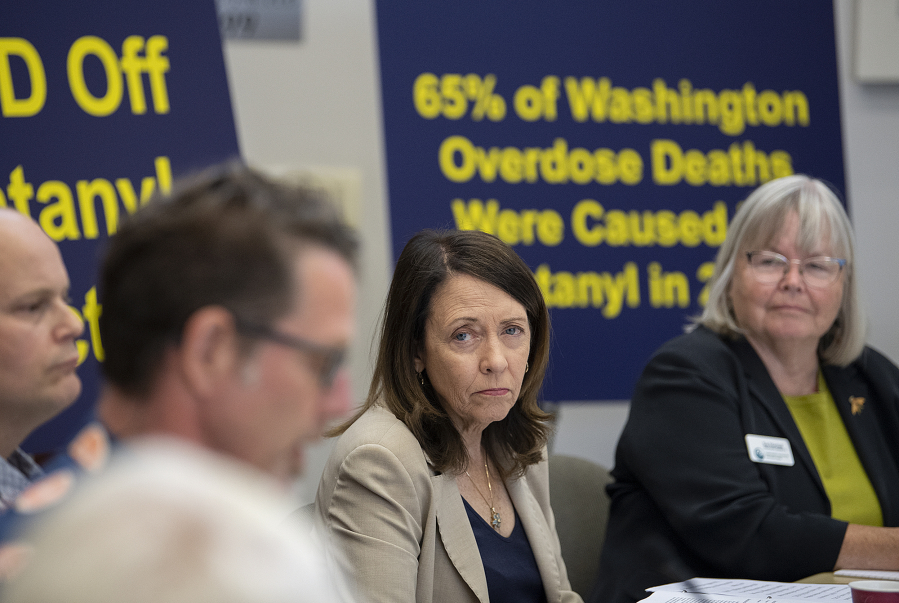SEATTLE — The number of overdoses and accidental poisonings among Washington kids in foster care, or who received services from the state child welfare system, increased more than tenfold over the span of four years, a new state report found, another indicator of the deadly spread of fentanyl throughout the state and country.
Last year, 56 kids with recent contact with Child Protective Services died or nearly died from overdoses, often caused by accidentally swallowing drugs, the report from the Washington State Office of the Family and Children’s Ombuds found. More than 40% of those were kids age 4 or younger who accidentally ingested drugs.
Twenty-two kids under state supervision died in 2022 from accidentally ingesting drugs or overdosing, the report found, nearly the same number that died in the prior three years combined.
In 2018, four kids under state supervision died and one nearly died from overdosing or accidentally ingesting drugs.
The report found that the youngest children are at greatest risk. Of the 56 deaths and near deaths, 23 involved kids 4 years old and younger; 18 involved kids 2 years old and younger.
“The main takeaway is the kind of sudden increase in critical incidents,” said Patrick Dowd, director of the Office of the Family and Children’s Ombuds. “Both child fatalities and near fatalities that are related to fentanyl, and specifically situations of young children, toddlers accidentally ingesting either fentanyl tablets or residue on foil, et cetera, in the home.”
Fentanyl causing surge in overdoses
The increase is overwhelmingly driven by fentanyl, the powerful synthetic opioid painkiller that has fueled unprecedented overdoses throughout the Seattle region, the state of Washington and the nation.
More than two-thirds of the accidental ingestions and overdoses found in the report were caused by fentanyl. In 2018, the same report found only one such incident involving fentanyl.
Among children in state supervision under age 11, there were 19 deaths or near deaths involving fentanyl last year. In the previous five years combined, there were just eight.
“This problem is not unique to Washington State,” the report says, noting a national study that found a 52% increase in child opioid deaths from 2015 to 2018.
“It’s kind of another circumstance that as a society we’re dealing with the rise of fentanyl in our communities,” Dowd said.
Troubling trends
The new report on children under state supervision follows, even more starkly, recent overdose trends among all children in Washington.
Thirty-eight kids, age 17 and under, died of opioid overdoses last year, the vast majority from synthetic opioids like fentanyl. That’s more than triple the number from 2019.
Overdoses have skyrocketed among nearly all populations as ultra powerful fentanyl has replaced heroin and prescription pills as the most commonly abused opioid.
Just within Seattle, the Fire Department is responding to 15 overdoses a day, the manager of the department’s mobile health team said in August.
A call for more training, resources
The report from the state ombuds recommended more training for child welfare workers and foster families. It also recommended making fentanyl test strips, naloxone and drug lockboxes more available to families.
“This is far from a silver lining. There’s no bright spot,” Dowd said, “but a lot of what we classified as a near fatality were near fatalities rather than fatalities because of the availability of naloxone or Narcan.”
The state Department of Children, Youth and Families has worked in recent years to try to provide services to families earlier, to try to forestall major problems and prevent kids from having to be removed and placed with foster families. And the number of Washington kids in foster care has steadily decreased in recent years.
“What is very challenging now is the confluence of those efforts to keep children in the home with the rise of fentanyl and the dangers that poses to children,” Dowd said. “How do we keep children safe while at the same time not overreact and start unnecessarily removing children from a parent’s care because a parent is struggling with an addiction?”



